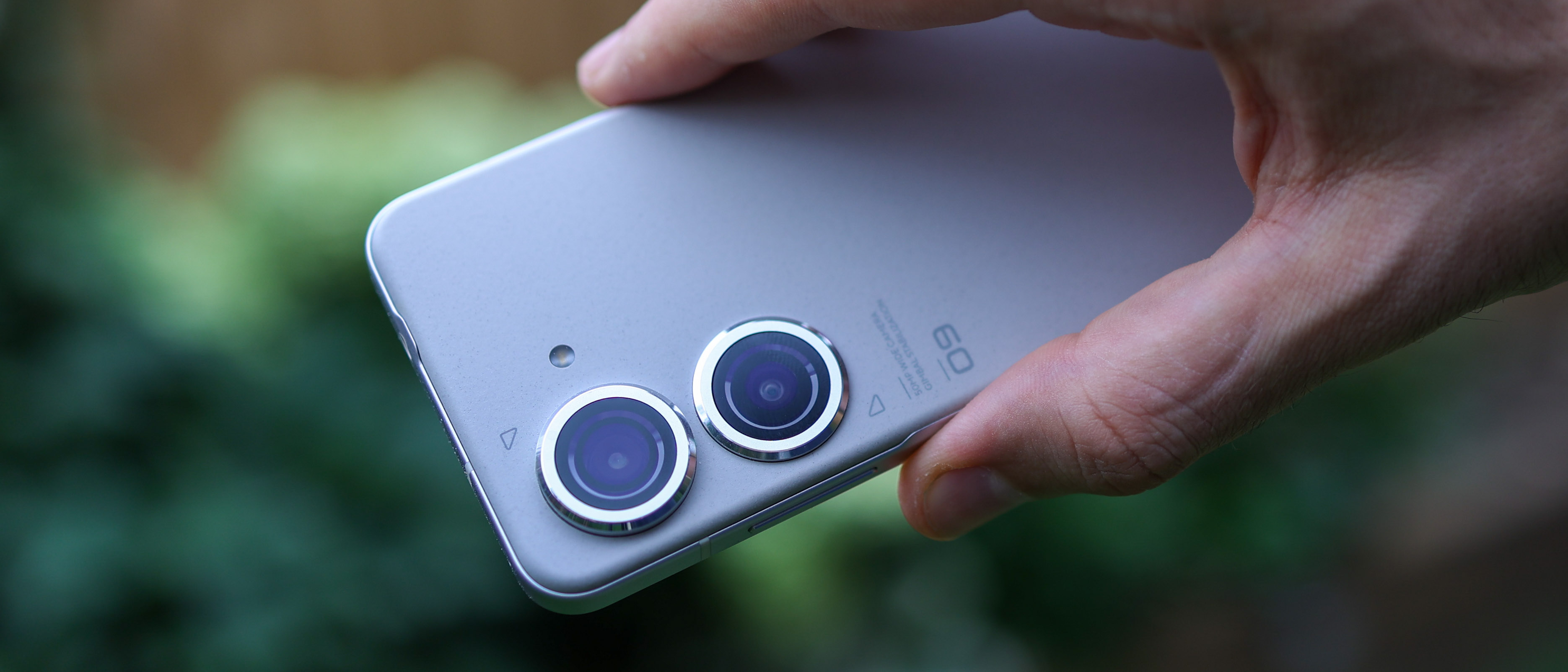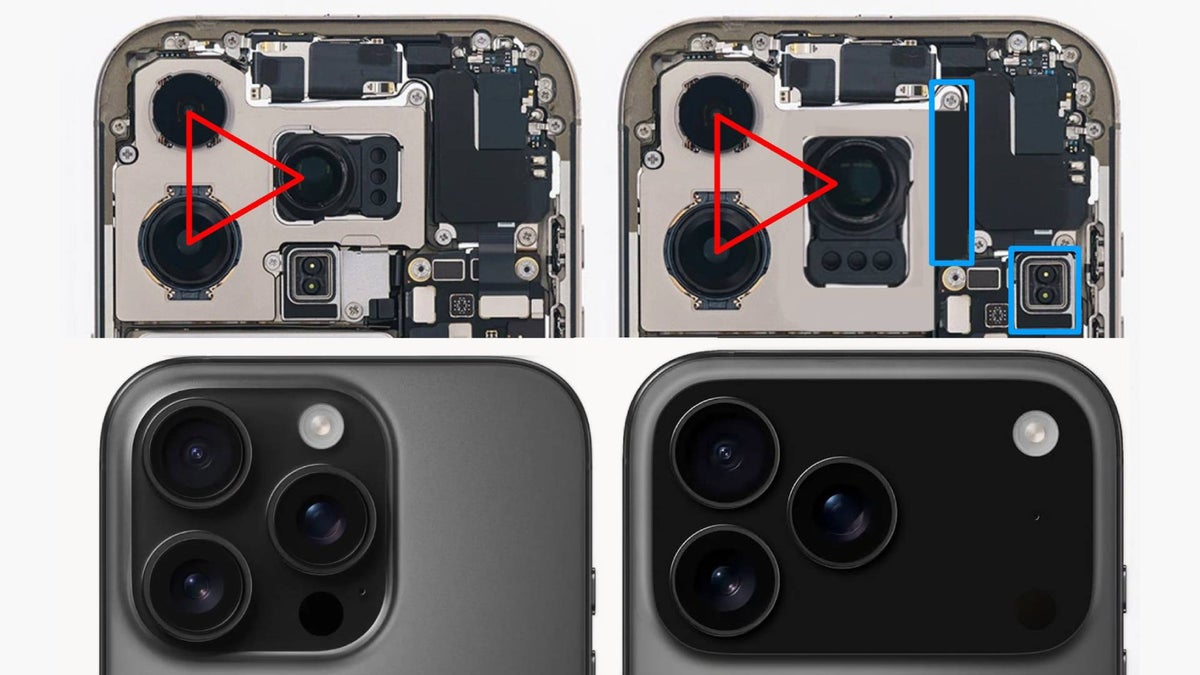Digital Camera World Verdict
We had high hopes when we found out that the Zenfone 9 combines the Oppo Find X5 primary camera sensor with gimbal stabilization, but the system doesn't quite live up to its potential. While you can get brilliant RAW photos from it, and good photos in auto mode, they're not best-in-class. On the plus, the Zenfone's secondary cameras and video capture are, and the phone's performance and battery life also hit the mark.
Pros
- +
Great video capture
- +
Strong ultra-wide and selfie cameras
- +
Powerful and smooth performance
- +
All-day battery life
Cons
- -
Image processing misses the mark
- -
No telephoto camera
- -
Misses out on wireless charging
Why you can trust Digital Camera World
Small smartphones mean compromises, especially when it comes to camera quality but Asus is here to put an end to the trend with its gimbal-stabilized Zenfone 9.
Compact without many discernable drawbacks on paper, the camera is just the start of the Zenfone 9’s flagship spec sheet. It features impressive internals, a cracking screen, a novel design, stereo speakers, and a nifty new Smart Key – a gesture-sensitive power button.
The camera, however, is the main draw for us. It’s the first time we’ve seen the 50MP Sony IMX766 – a capable sensor used in the Oppo Find X5, matched with gimbal stabilization, like the one Vivo uses on its X80 Pro 5G.
Like the Nothing Phone (1), Asus hasn’t loaded any superfluous, low-res macro cameras on here. Instead, there's a 12MP ultra-wide with autofocus that can get close up to a subject. Even the 12MP front camera packs PDAF – so none of the Zenfone's cameras are fixed-focus.
That means a flagship camera mix, up to 8K video capture, and top-tier smartphone power in the most pocketable Android package around – and all for $699 / £699. Too good to be true?
Asus Zenfone 9 design and screen
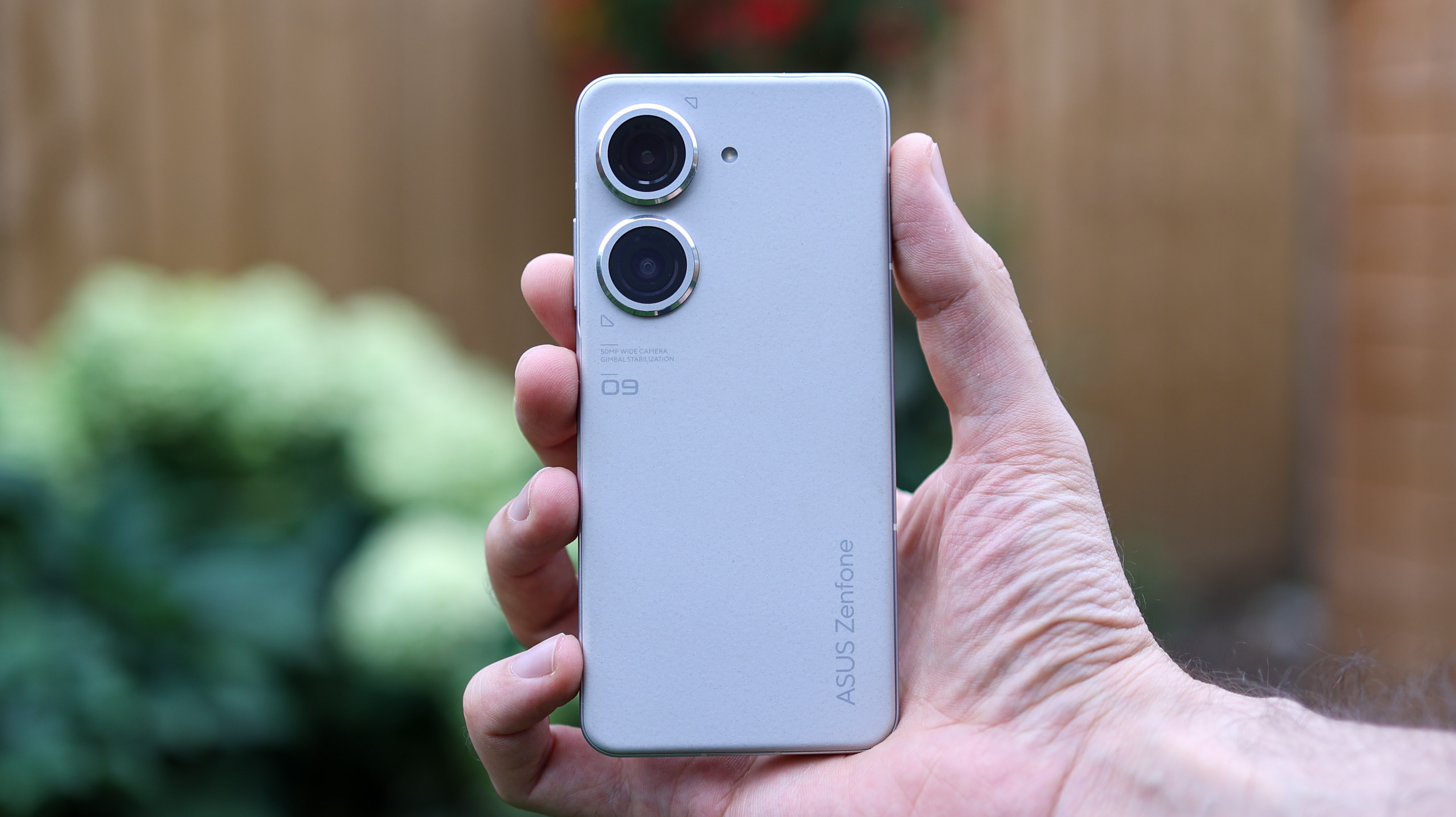
In pictures, the Zenfone 9 probably looks like any other phone from the front, but it isn't – it's smaller. This dinky footprint is made possible by its 5.9-inch screen, which makes for comfortable use one-handed.
The phone's box is packed with a fast charger (30W) and a case, which is hard plastic and feels solid, unlike many soft, bendy cases that ship with many phones today. With or without the case, the Zenfone 9 is a thick phone, measuring around 9.1mm – chunkier than even the massive Samsung Galaxy S22 Ultra.
Framed by a flat, metal band around the sides, top, and bottom, the right side of the Zenfone 9 features power and volume buttons, there's a USB-C port at the base, and at the top is a headphone jack.
The back of the phone is a strange material that feels like a synthetic, almost felt-like fabric. This doesn't feel bad – much warmer in hand than a glass back. We do worry about how well it ages, though, if left exposed to the elements (and coffee splatters).
Protruding from the back panel with gusto are two large metal rings that play host to the primary and ultra-wide camera, while the punch hole selfie camera lives on the front, nuzzled in the top left side of the screen.
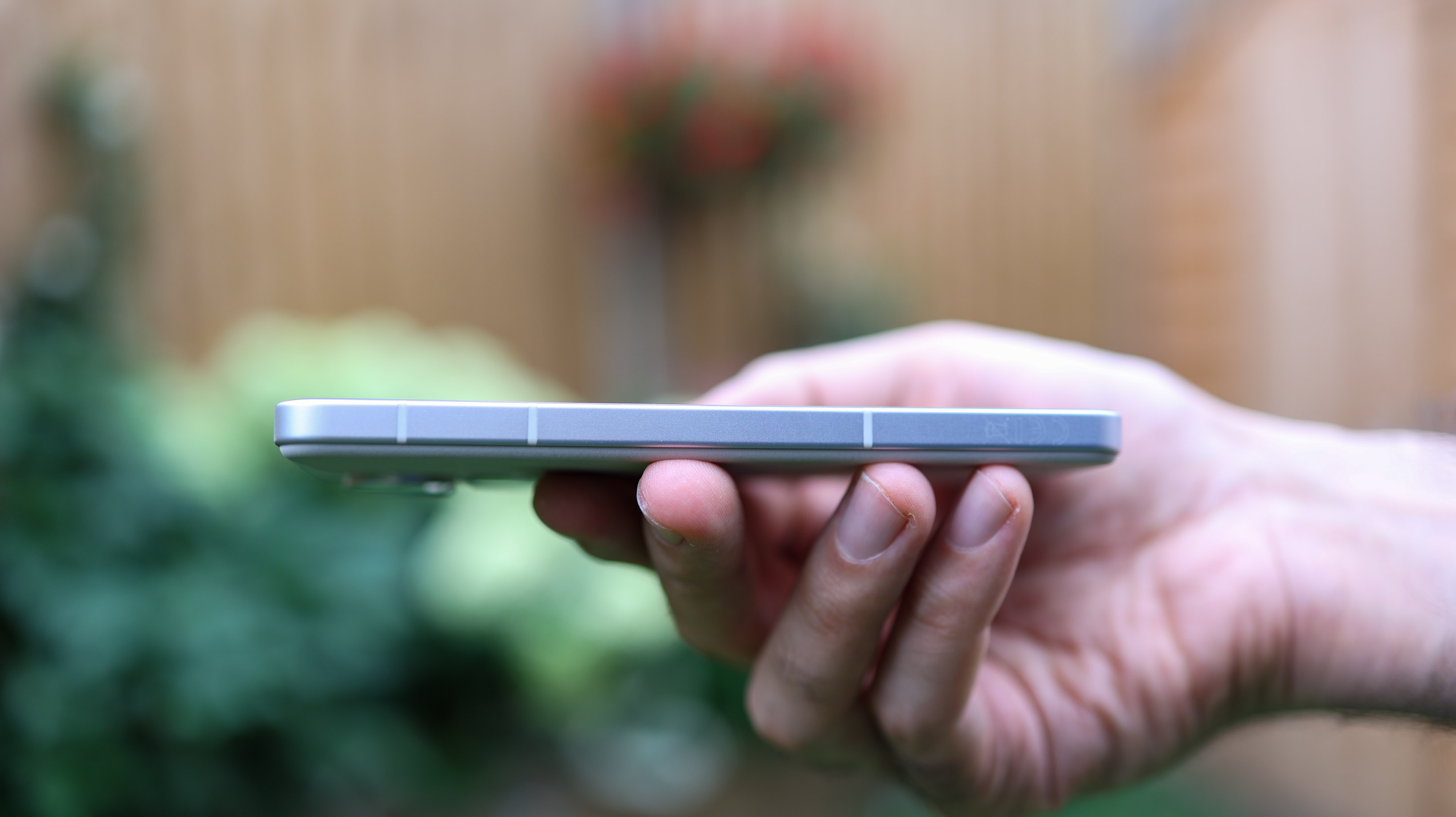
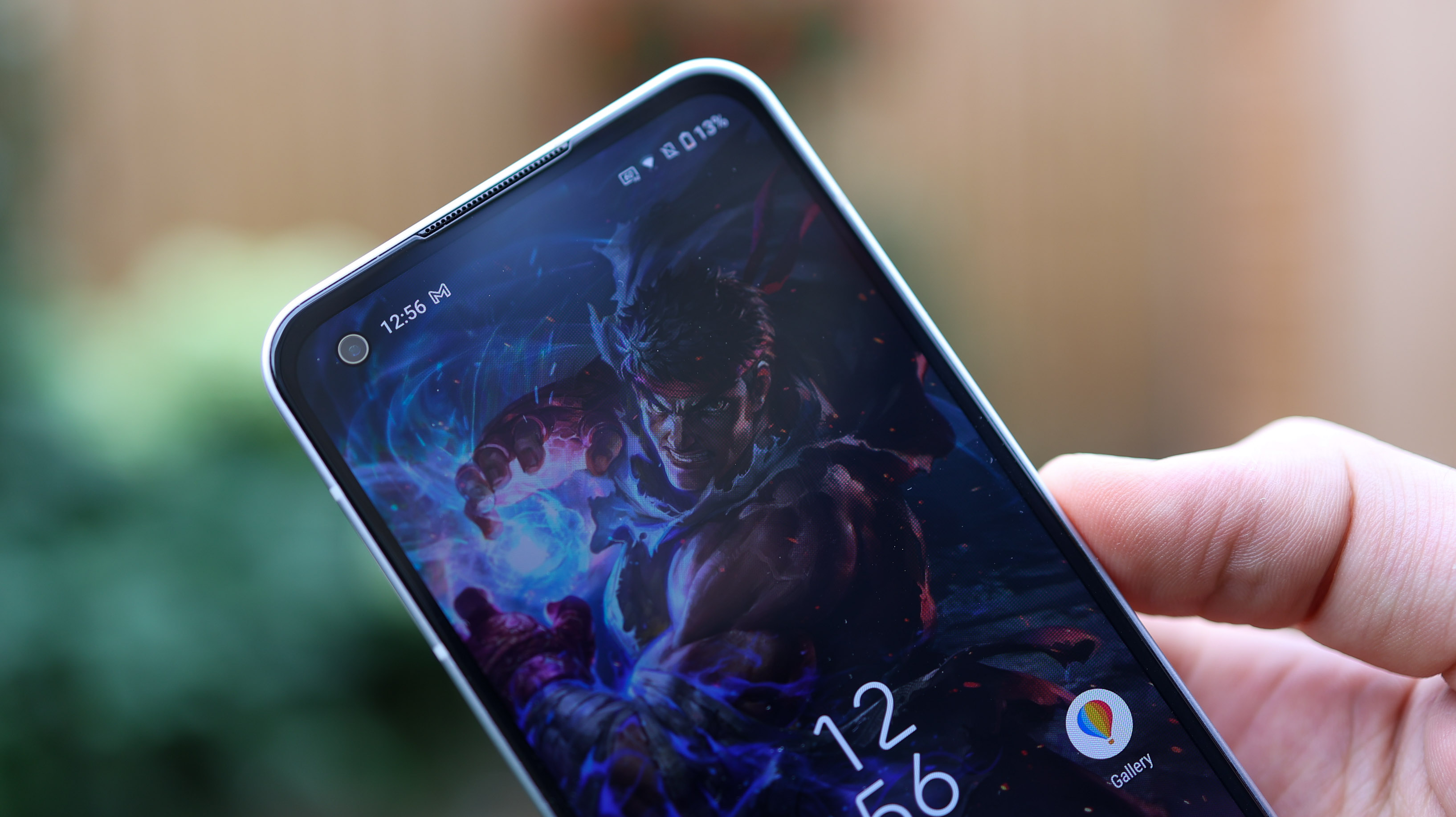
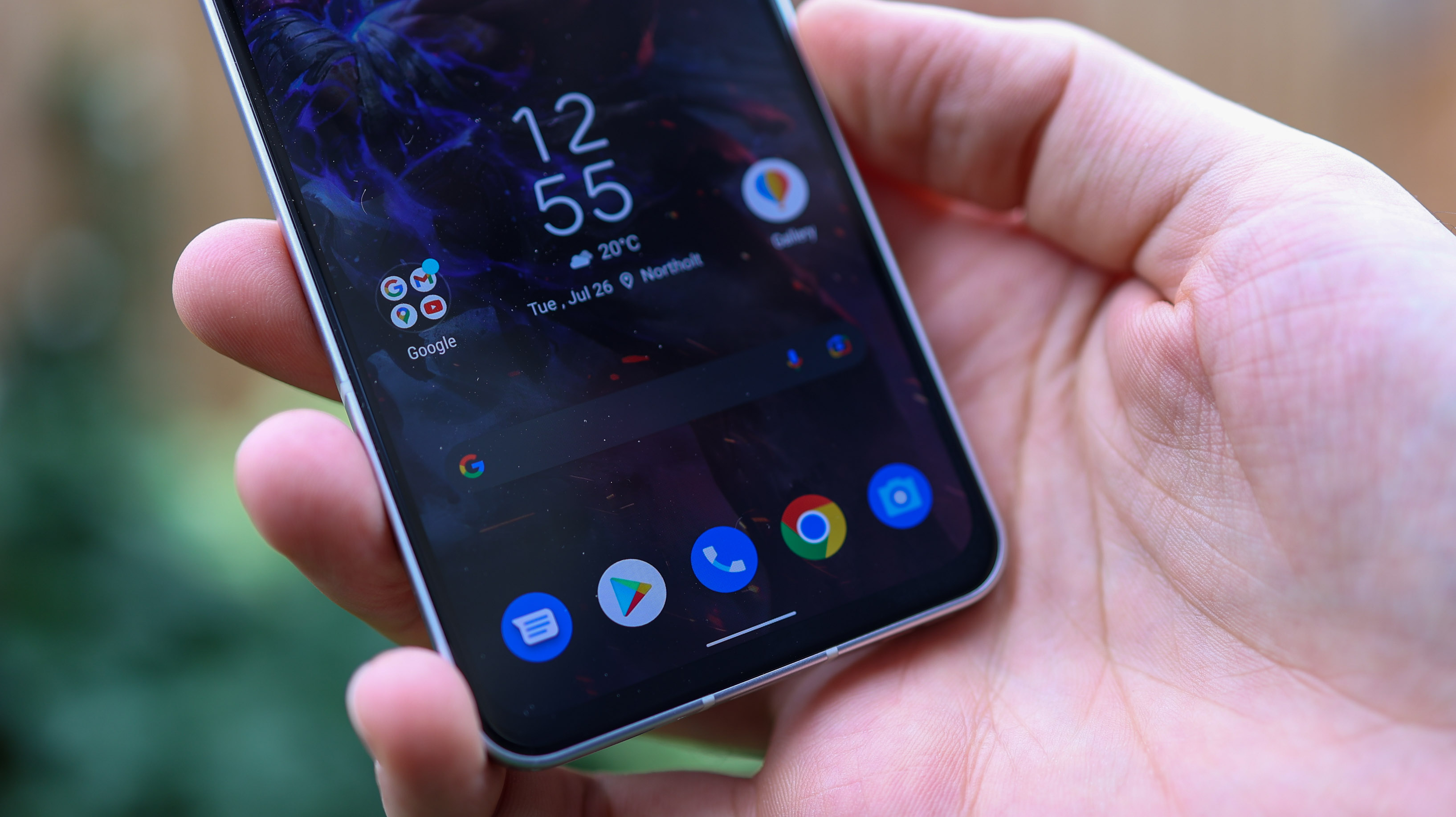

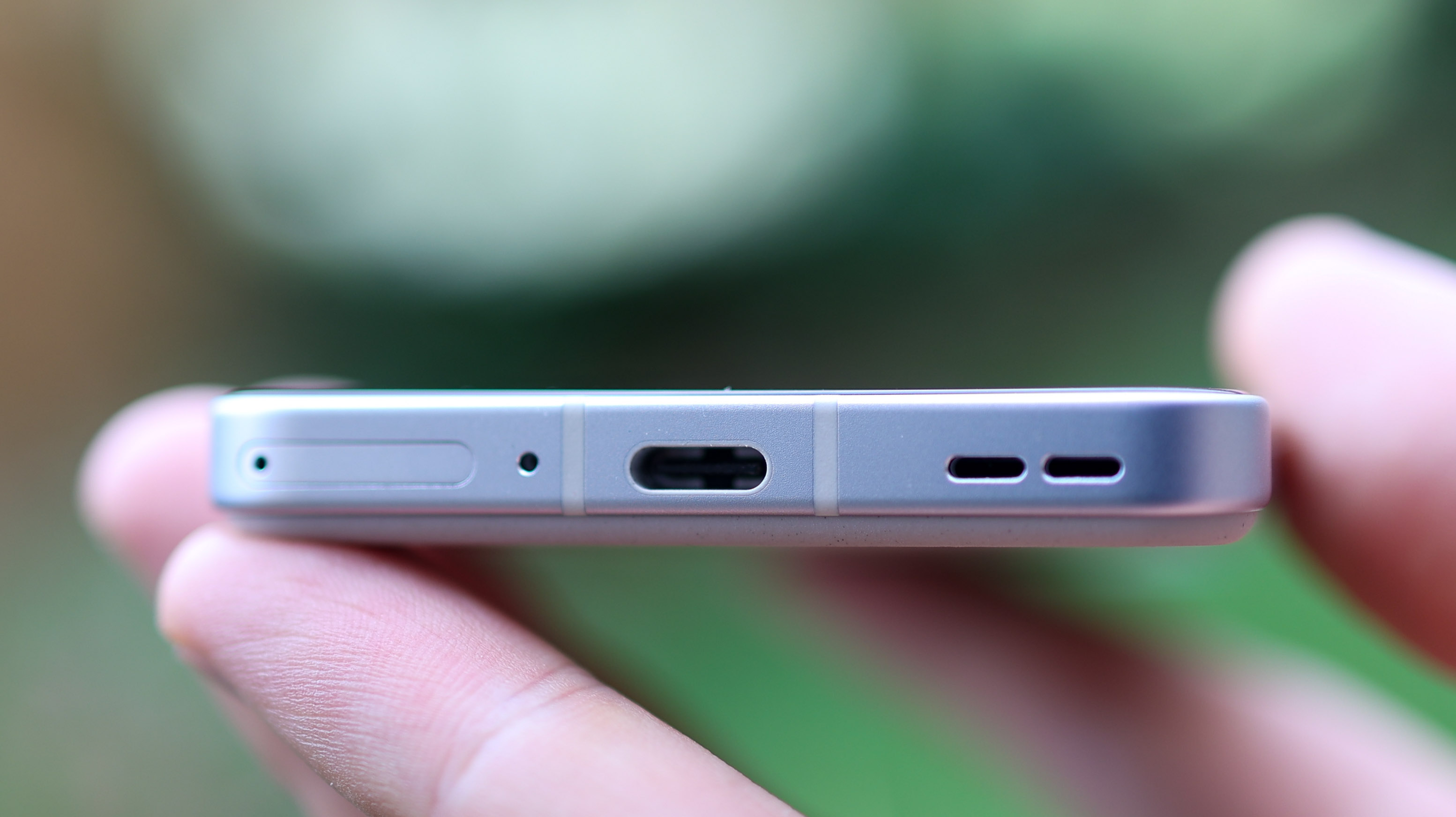
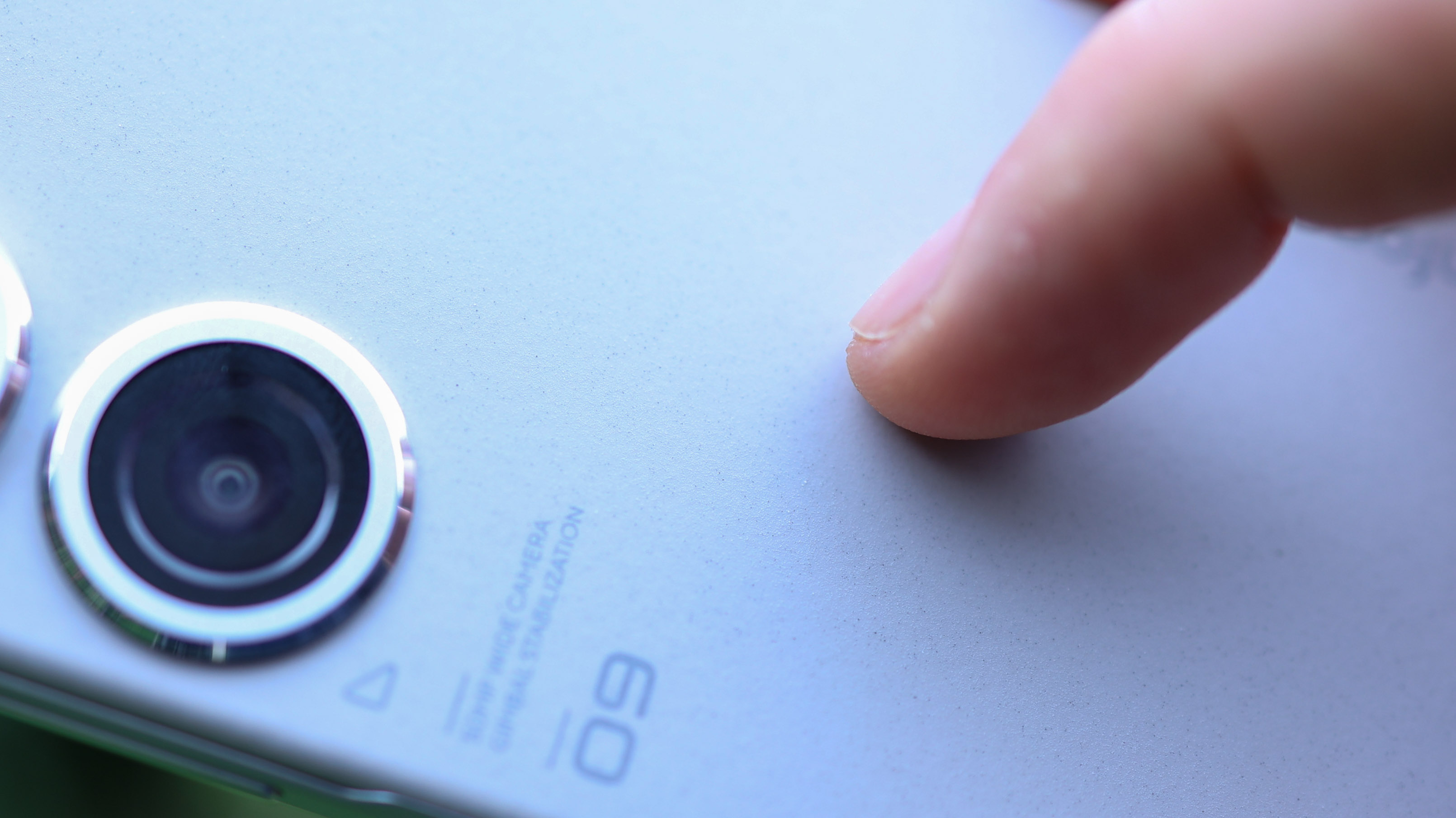
At 5.9 inches, the Asus Zenfone 9 screen is small for an Android phone today, though with its 20:9 aspect ratio, it's taller than it is squat. Perfect for one-handed use, Asus also adds a one-handed mode in the settings, so you can bring down the contents to the lower half with ease. This is the best phone we've tested for anyone with limited mobility in their thumbs, or small hands.
With its AMOLED technology and Full HD resolution, the Asus Zenfone 9's display quality is strong. It matches saturated, lively colors with a sharp 450 pixels in every inch of screen – you won't make out any pixelation here. Viewing angles are also impressive.
The worst thing about the screen is its brightness, which is good, but not great. We first realized the Zenfone capped out at below 1000 nits (our comfortable-outdoor-viewing benchmark), when we took the product photos for this review. You'll see the screen isn't super-clear. Capping out at 800 nits, therefore, it falls behind most of the competition at its price point.
Asus Zenfone 9 camera
The Asus Zenfone 9 brings back one of the better sensors from the last few years – the Sony IMX 766. First introduced on the Oppo Find X3 Pro, and brought back for the Find X5 series and myriad other devices, it's generally a great performer, especially when matched with OIS.
The gimbal camera system in the Asus Zenfone 9 delivers six-axis stabilization, which should keep the 1/56-inch sensor steady. Matched with EIS, it captures 16MP photos by default, and Asus promises a lossless two-times digital zoom.
Already off to a good start, we're also impressed by the ultra-wide camera, with its f/2.2 lens with PDAF, matched with a 12MP, 1/2.55 Sony IMX 363 and a 113-degree field of view. Doubling up as a macro camera, it can capture close-up photos as near as 4cm.
Finally, the front camera, which is a 1/2.93-inch Sony IMX663 sensor / f/2.45 lens combo also sports dual PDAF, and captures up to 4K videos.
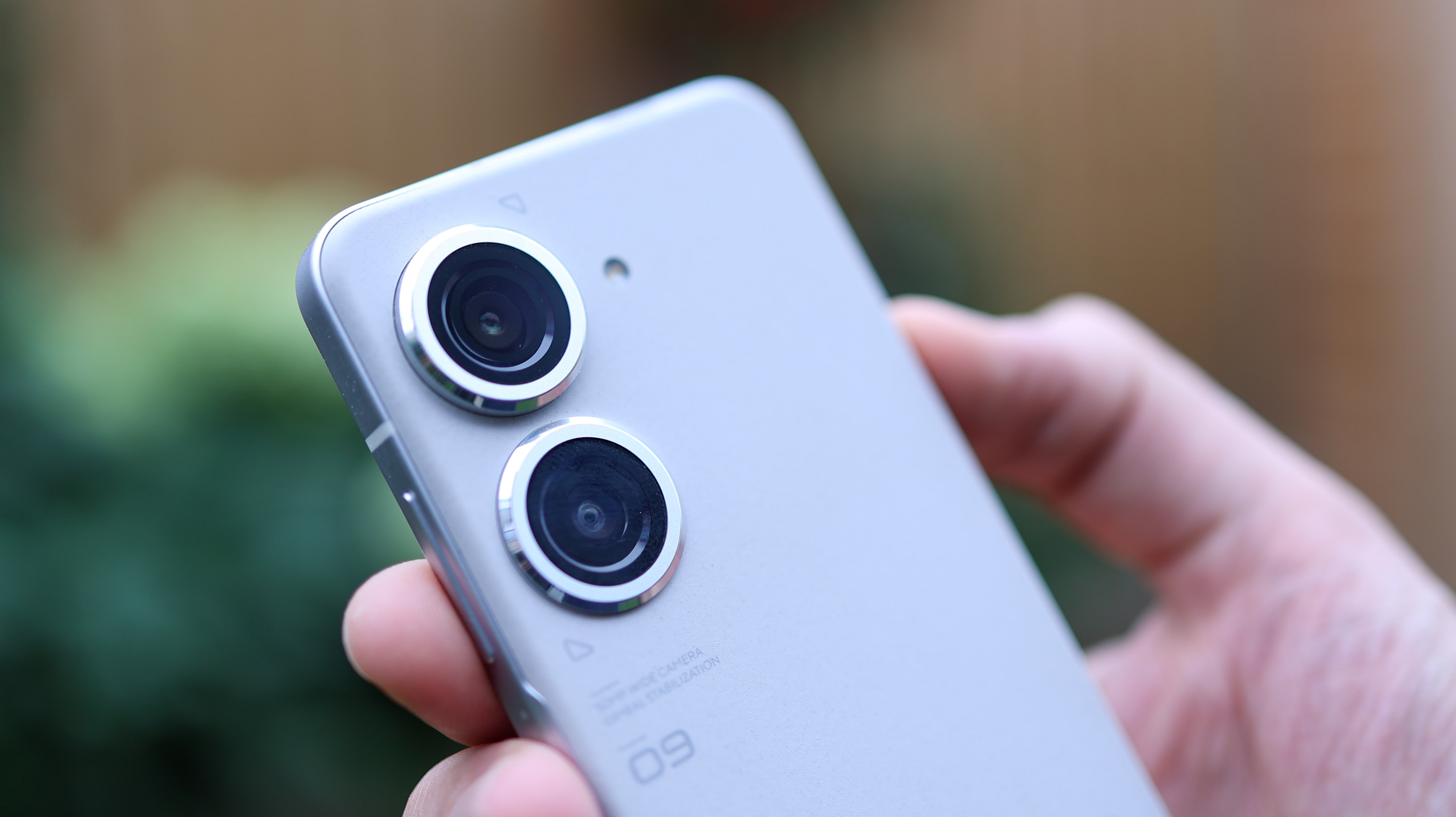
As for shooting modes, the Zenfone 9 combines standard options: Auto, Pro mode, Video, Pro Video, Night mode and Portrait with Slo-mo, Time lapse, Pano and Light trail.
The main camera records up to 8K resolution video at 30fps, and 4K resolution video at 60fps, but if you switch to Slo-mo mode, this can bump up 4K capture to 120fps. Also worth noting, the Asus Zenfone's night mode works across its primary, ultra-wide and selfie cameras.
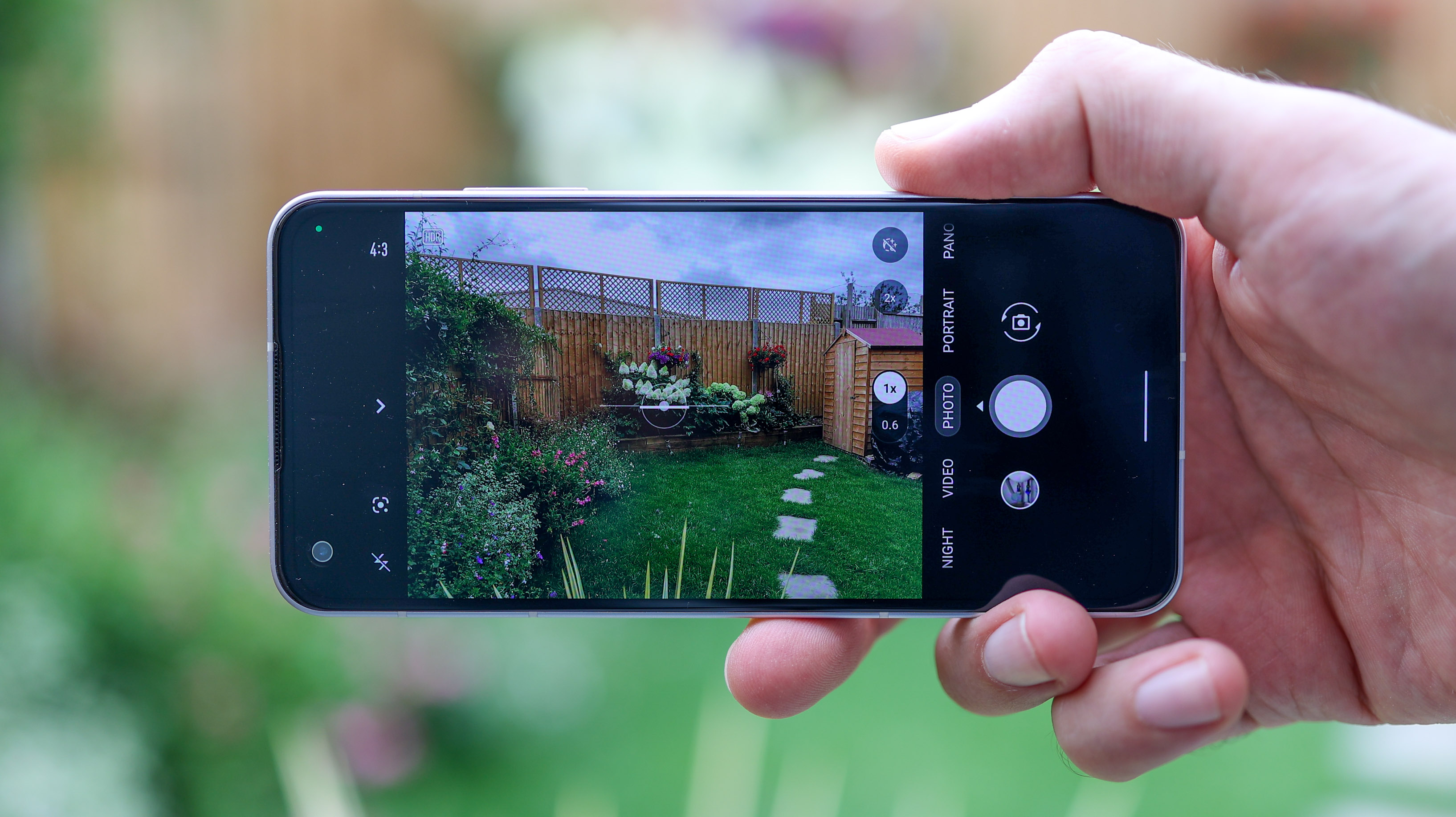
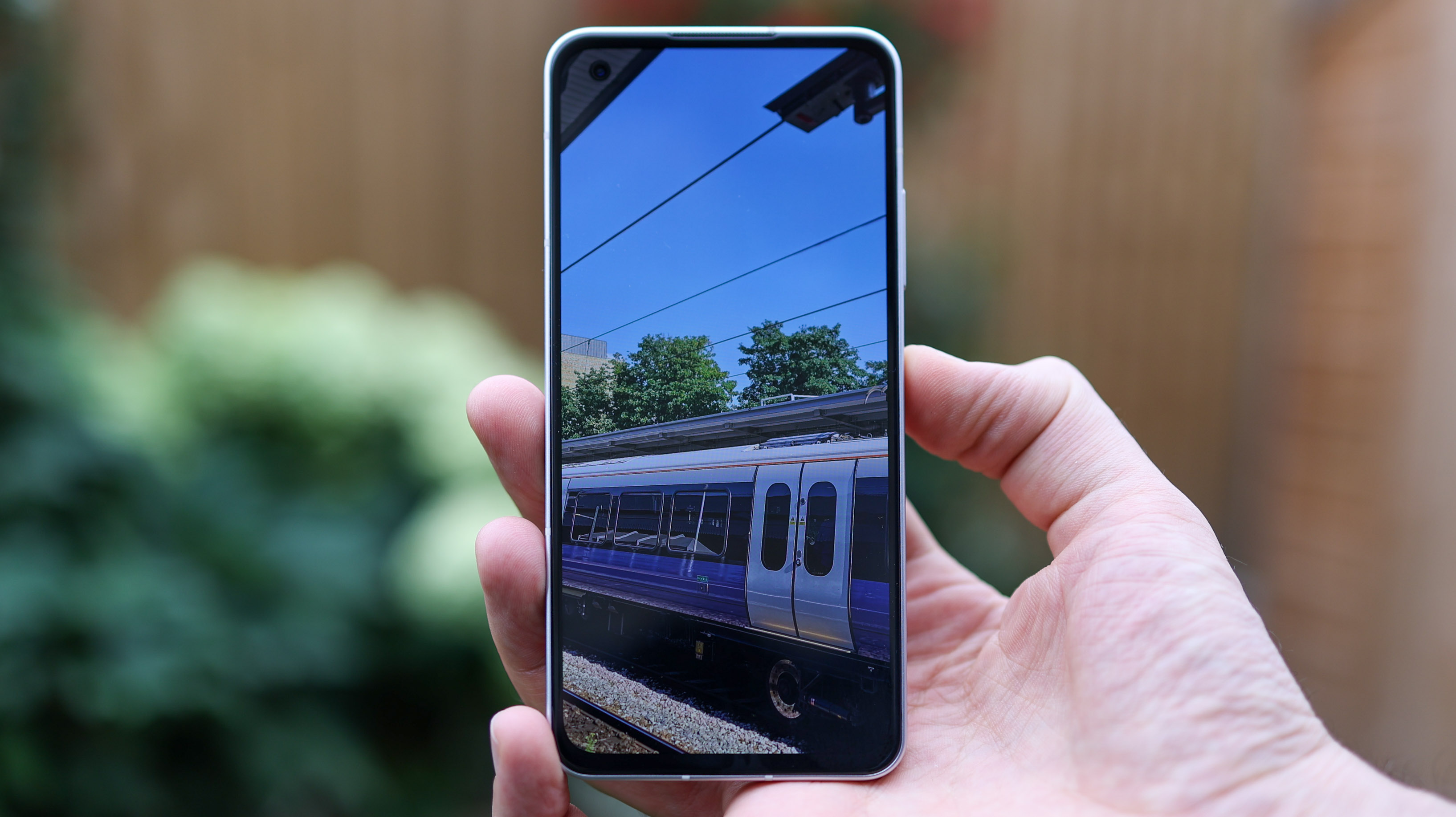
Asus Zenfone 9 camera review
The Zenfone 9 gets a lot of photography basics right. It's quick to focus, has a simple but effective interface, lowlight performance is generally strong, and its photos are usually reliably good. The problem is, we wanted them to be great.
In well-lit scenes, the gimbal-stabilized IMX766 sensor captures detailed images with accurate colors. There's no telephoto camera, but you can crop into the 16MP photos captured by default, or switch to 50MP mode for more scope for cropping in post.
As you can see in the samples below, photos taken at night have a rich quality to them. Asus's lowlight processing that activates a long shutter speed does a good job of brightening things up while retaining decent dynamic range.
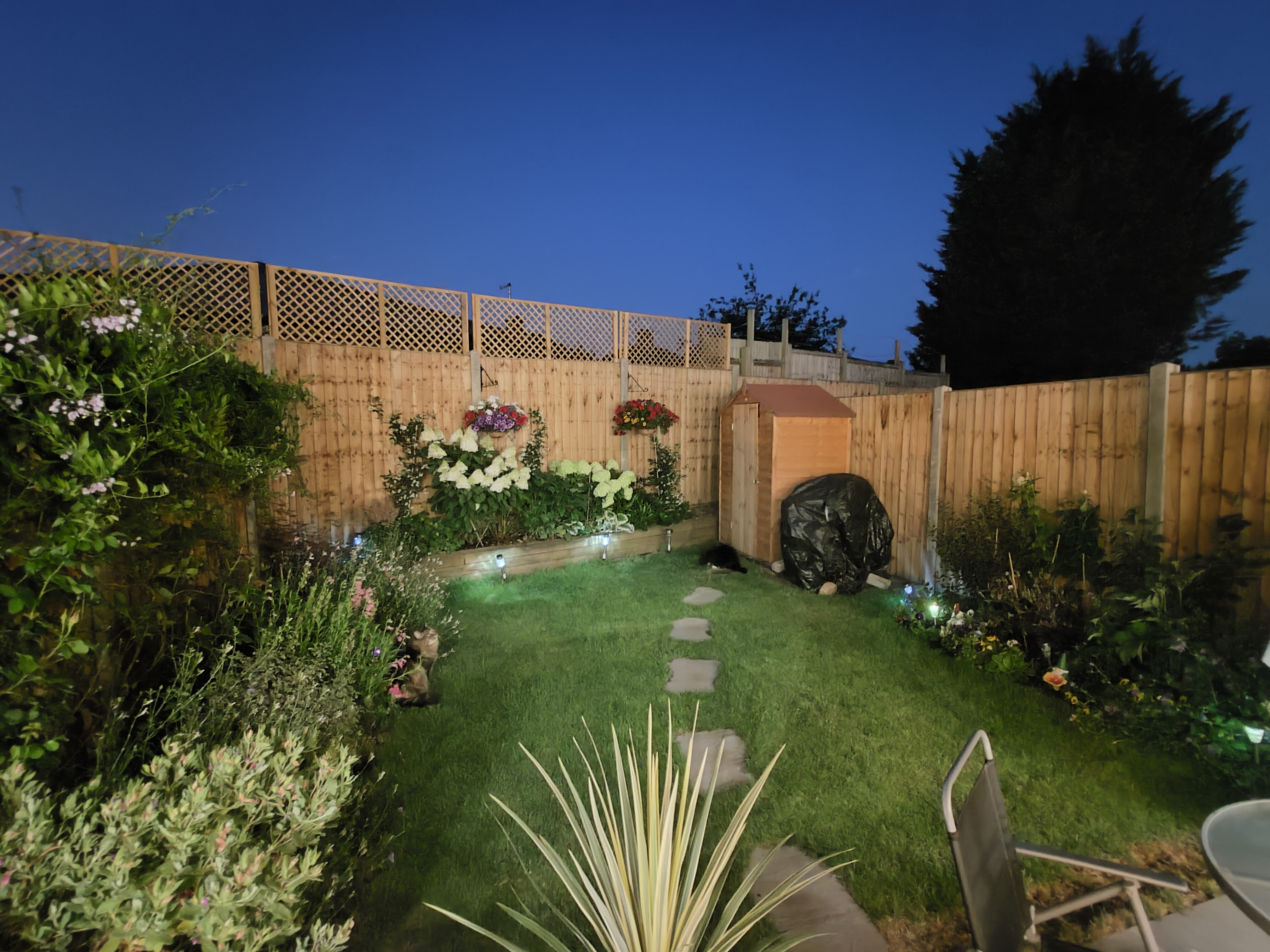
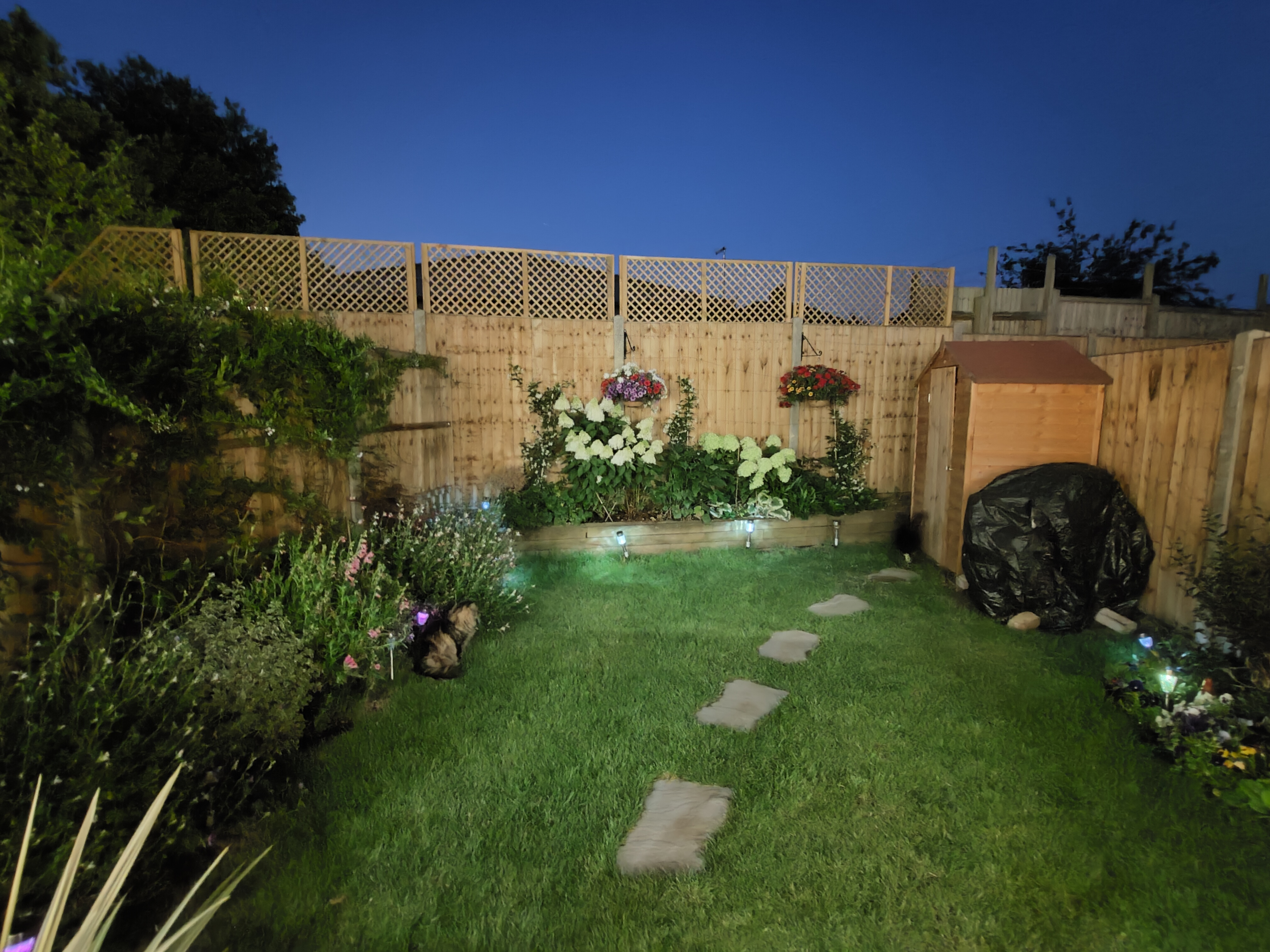
Also interesting is the fact that the Zenfone's auto HDR feature kicks in when backlighting is harsh, and pulls out seriously impressive tonal range. However, simpler shots – photos taken in relatively bright indoor environments, frequently miss out on shadow detail.
There's also some inconsistency with the camera's performance. While the photo below makes the cat's fur look crispy and over-sharpened/textured, other photos turn layered, textured shadows into amorphous blobs of black. When photo contents live in the mid-tones, as is the case with the second photo below, however, the Zenfone is in its comfort zone.

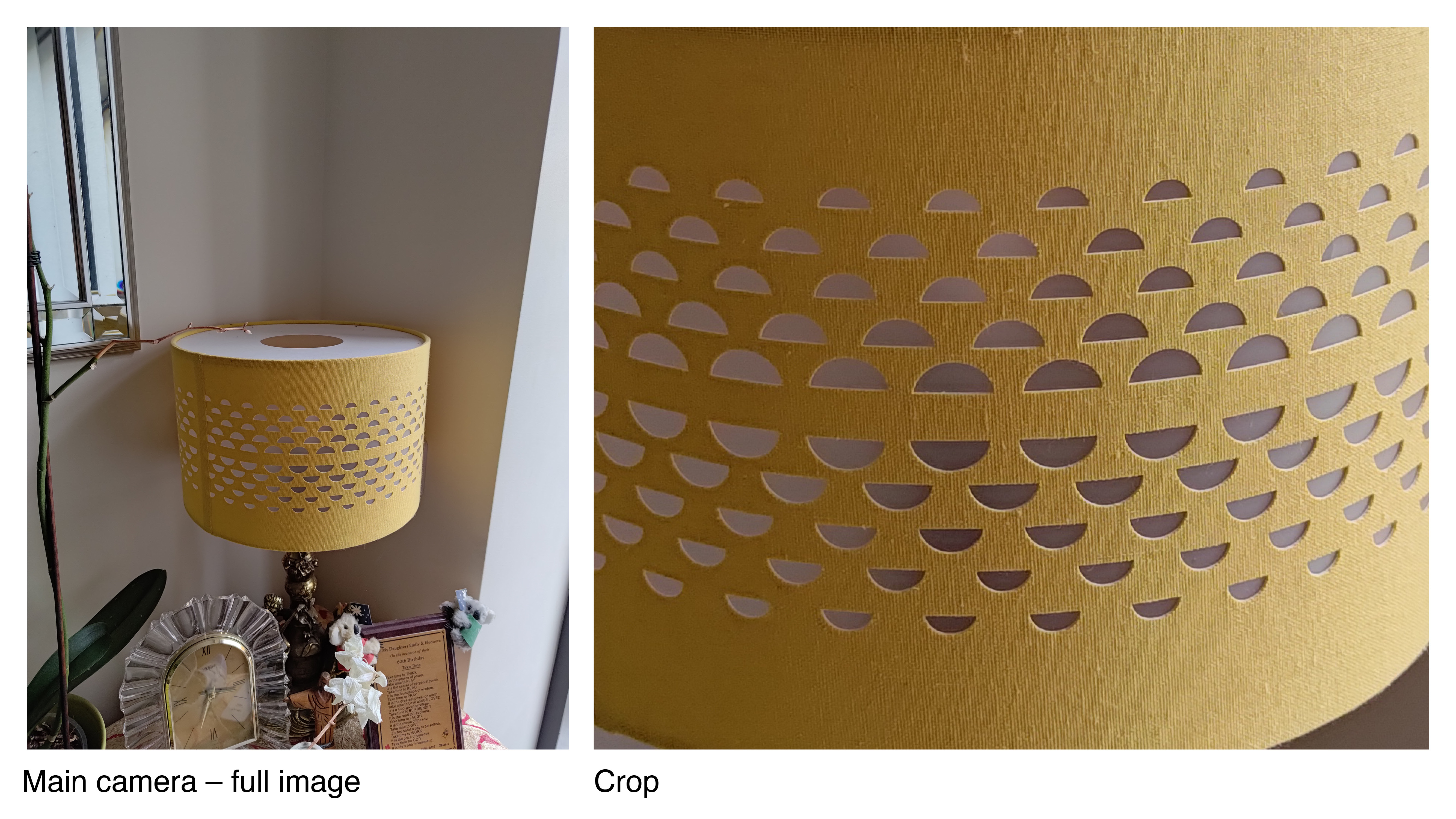
The reason we know Asus has been too heavy-handed with its photo processing is because RAW shots are packed with detail. Clocking in at around 100MB, we were able to make some photos the camera failed to do a good job in when shooting auto, look great. Also handy – the gimbal meant we could capture photos with a longer shutter speed than on other phones with the same sensor – perfect for seasoned manual photographers.
All this manual faffing takes time, though, and the most important thing about a camera phone is its ability to take a great shot in Auto mode. Unfortunately, the Zenfone 9 doesn't always achieve this.
What is excellent is Asus's camera mix – the ultra-wide and selfie cameras are both very competitive. As you can see in the photo below, the ultra-wide camera shooting at 4cm away captures an altogether different type of macro photo to the main camera. With a less shallow depth of field but more sustained detail, it's a useful addition.
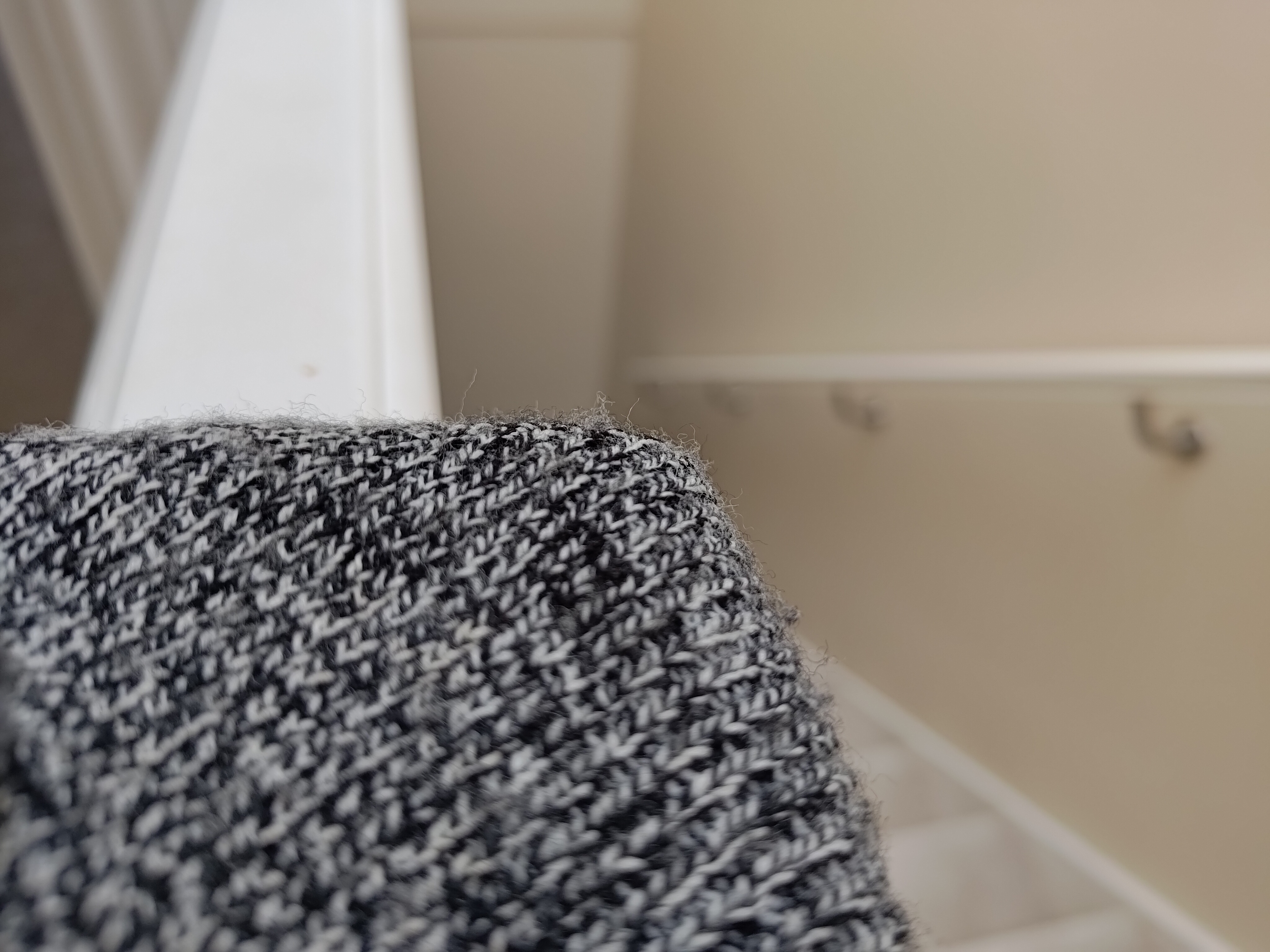
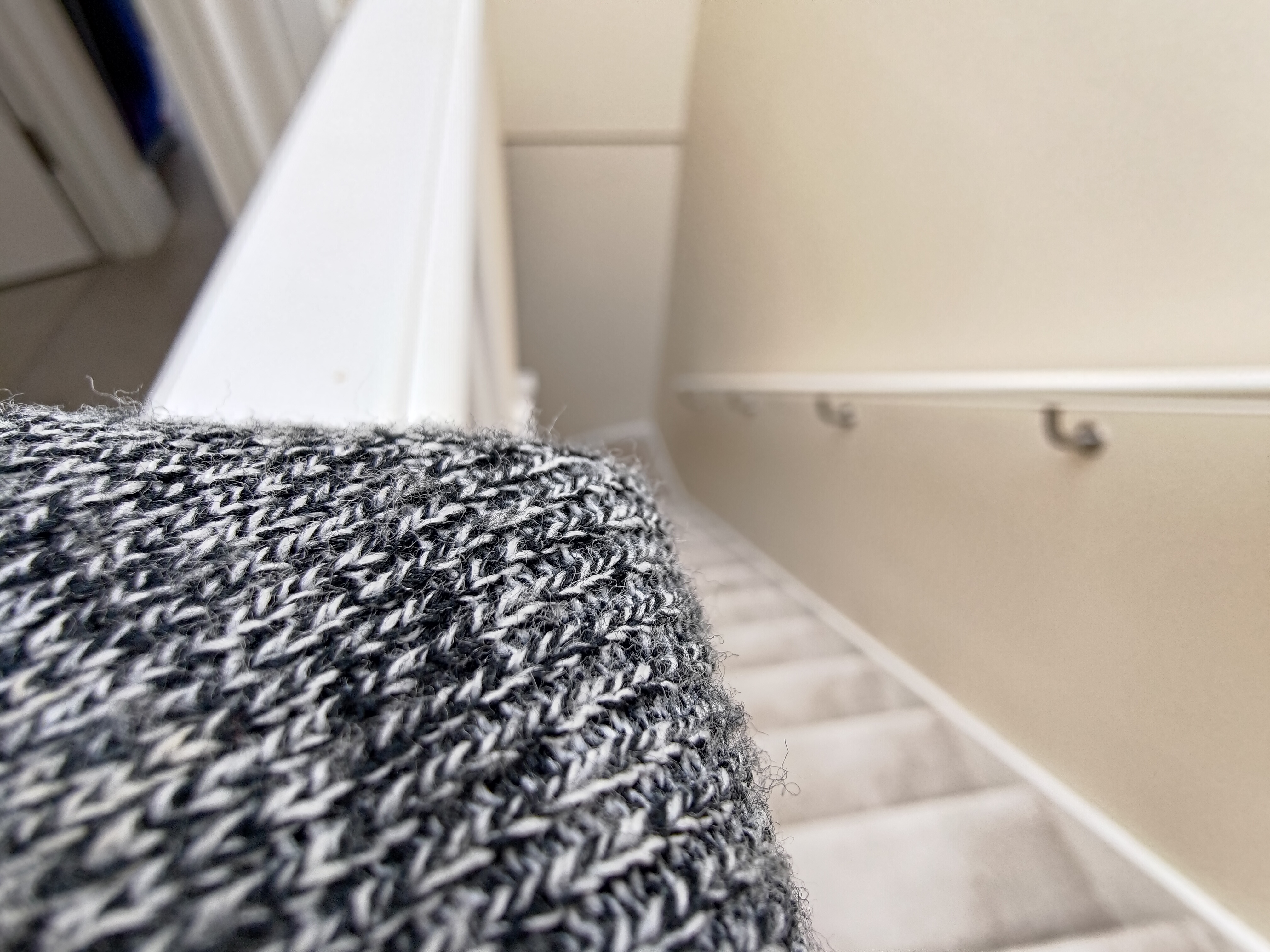
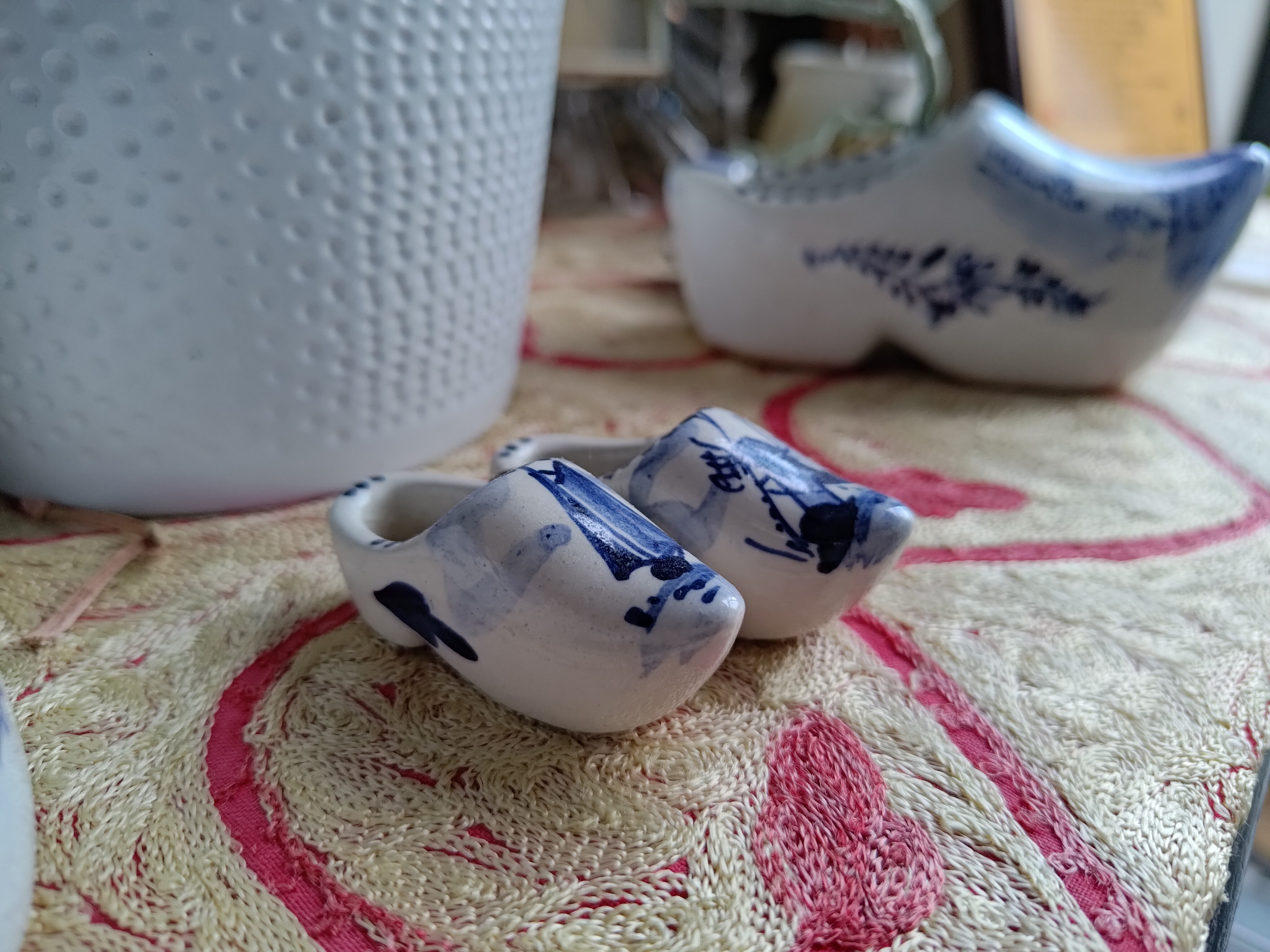
As for the front camera, it also bests the majority of selfie snappers on Android phones. The fact it features autofocus means its portrait mode is effective and you can capture close-up shots, as illustrated in the final image below.
Better still is the Zenfone 9's video capture. The gimbal makes 4K and 8K footage look steady, even at up to 120fps (4K). This makes Asus's mini flagship one of the best options for video editors who shoot high-res, handheld video in bright, well-lit scenes, and need to crop into them. The fact the phone also didn't overheat, even after shooting half an hour of 4K, 60fps footage – great going, especially given its size.
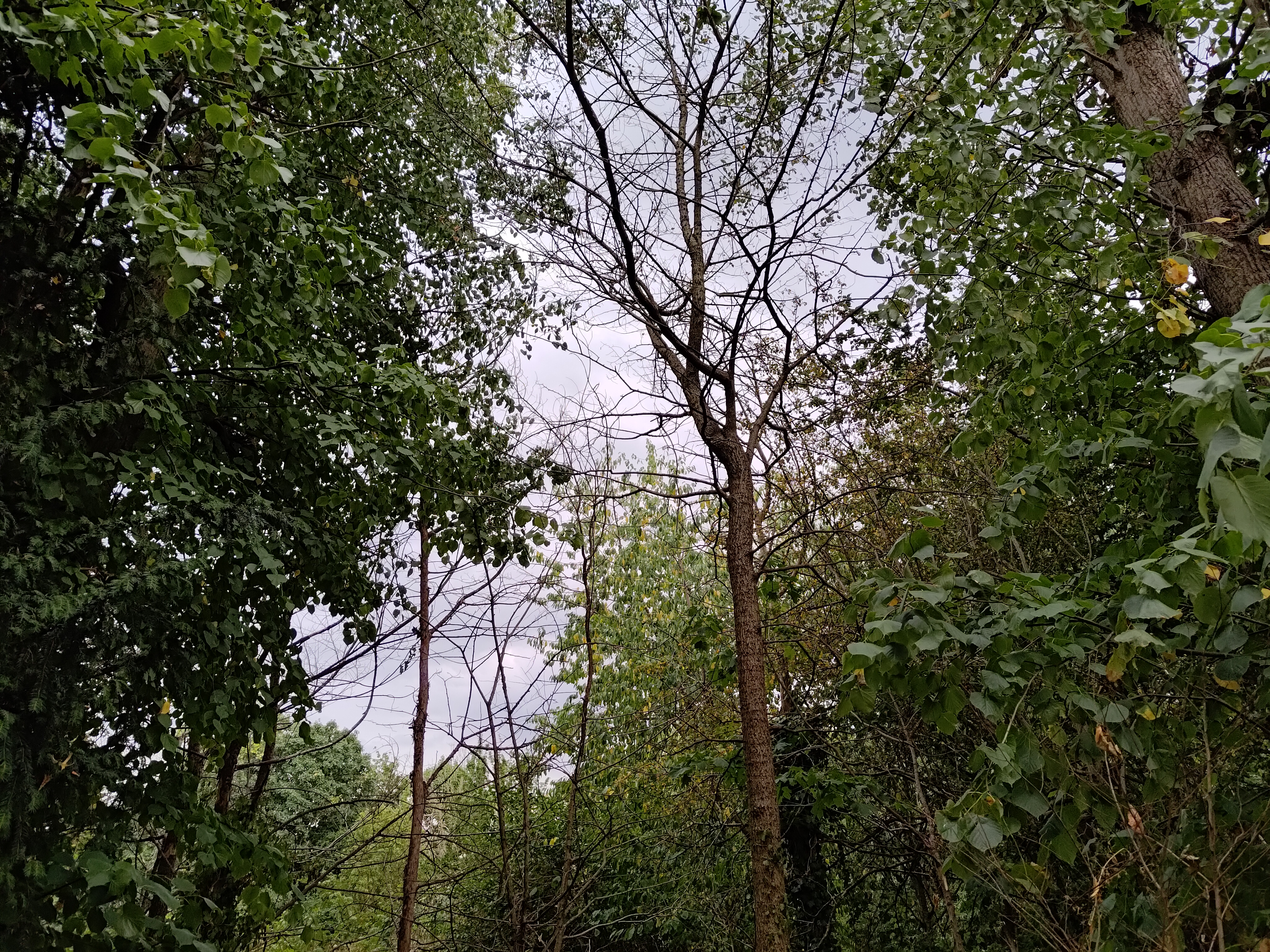



Asus Zenfone 9 additional specs
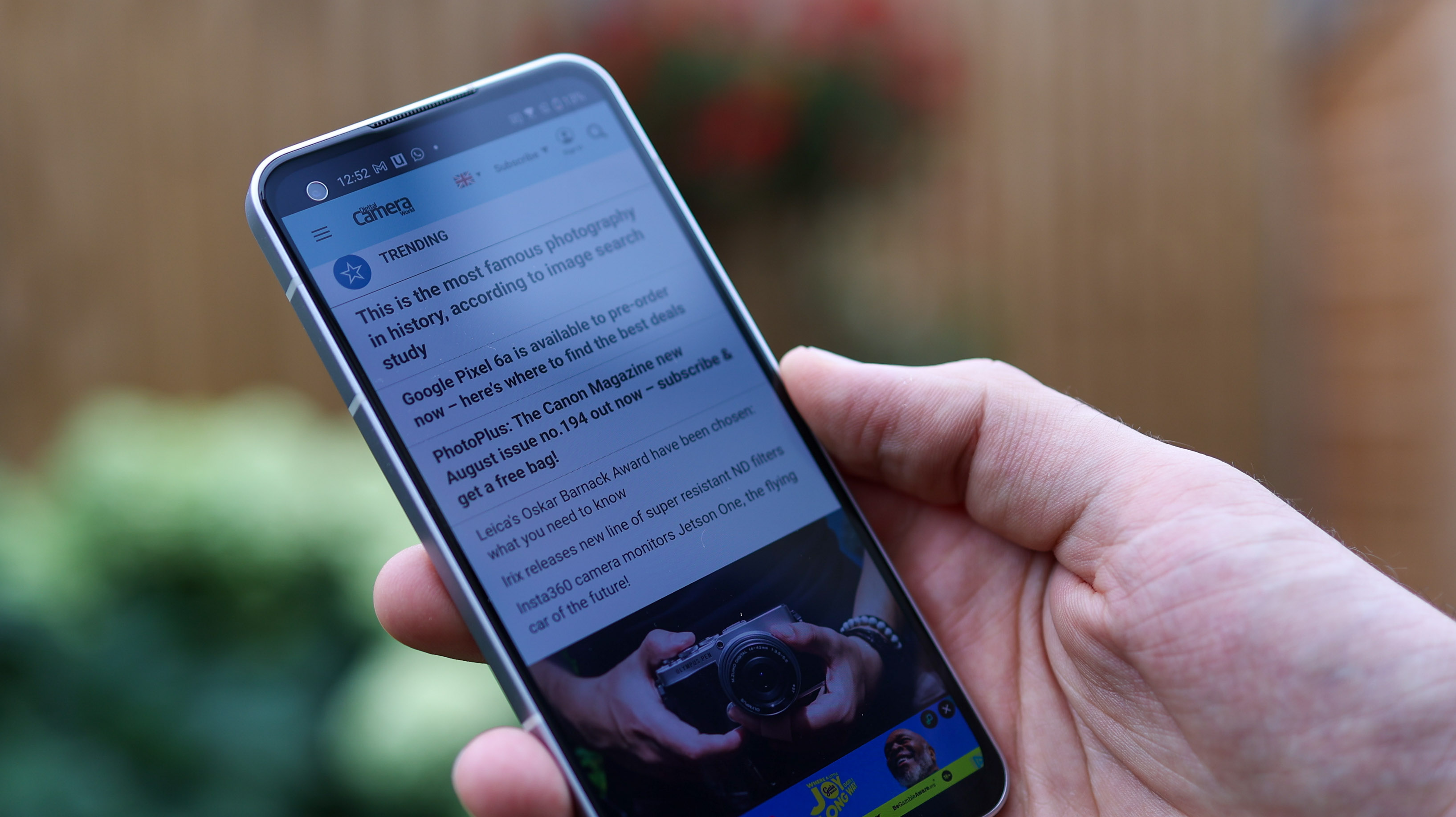
With a Snapdragon 8+ Gen 1, the Asus Zenfone 9 packs top-end flagship power, and tears through benchmarks and games with more clout than virtually any other Android phone on the market.
We experienced no slowdown in our time with the phone, and Asus's UI is relatively stock, running Android 12 with some considered additions over the top. One such highlight is the power button, which you can customize with up to four shortcuts to your favorite apps. One button, four shortcuts? Surely not. The way Asus makes it work is by adding swipe recognition to it, so a swipe up is one input, a swipe down is another input, a press is a third, and a long-press is the fourth and final input. There's even a fifth input if you want to double tap the back of the phone. Strange, but effective.
With either 8 or 16GB RAM and 128 or 256GB storage having space for your favorite apps shouldn't be an issue, though there's no microSD card expansion support.
With its small 4300mAh battery, we didn't expect the excellent battery life we got from the Zenfone 9. It easily made it through a day in our time with it, and nailed our battery benchmarks, outperforming most phones in the Android camp when it came to screen-on time.
While the phone charges at 30W, so powers up in around an hour and fifteen minutes – iPhone-beating but not Android competition beating – its main battery woe is the lack of wireless charging.
Verdict

We really thought the Asus Zenfone 9 would make it into our best camera phones of 2022 list, given the fact it marries a gimbal system with the tried and tested IMX766, a strong camera sensor. Unfortunately, however, over-zealous processing on Asus's part holds the Zenfone back from being the phone we wish it was.
Don't get us wrong, the Zenfone 9 is still a good camera phone. It captures excellent footage in both 4K and 8K, held together beautifully by the gimbal system, and its ultra-wide and selfie cameras do a great job. It's nighttime capture is also great. We just wanted a bit more from its main camera in auto mode.
Pros happy to shoot RAW and edit photos will likely enjoy what the Zenfone 9 can do. Folks who aren't too fussed about having the best, most consistent camera around, it'll definitely do the job – and it gets a lot right when it comes to performance and pocketability. That said, anyone who keeps their phone on auto mode and knows they like a flatter-looking image with lots of shadow detail – this isn't the phone you're looking for.
Read more
Best camera phones
Best rugged phones
Best budget phones
Basil Kronfli is a freelance technology journalist, consultant, and content creator. He trained in graphic design and started his career at Canon Europe before moving into journalism. Basil is also experienced in video production, independently running the YouTube channel TechEdit, and during his time at Future, he worked alongside the Digital Camera World team as a senior video producer.
